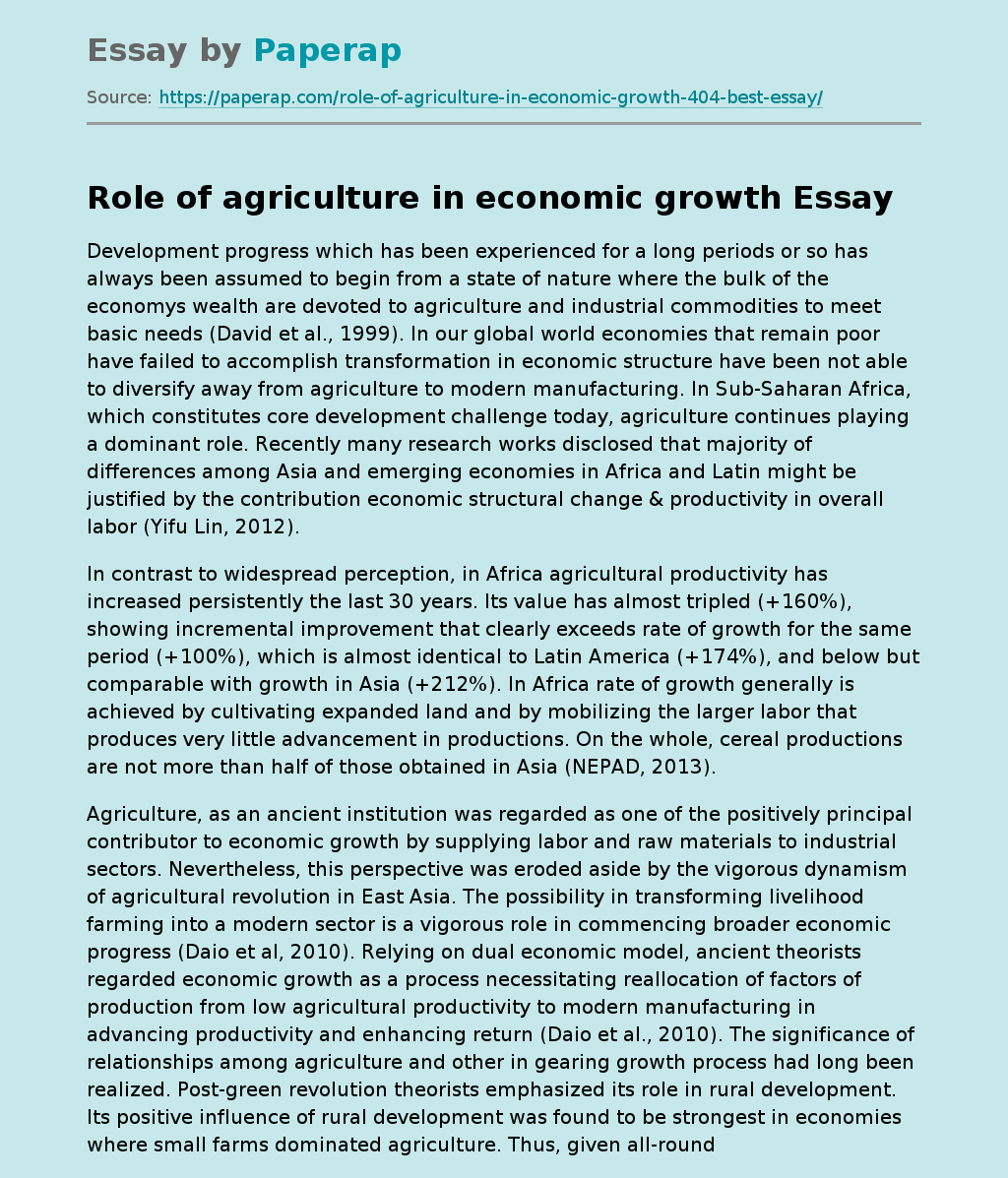Role of Agriculture in Economic Growth
Development progress which has been experienced for a long periods or so has always been assumed to begin from a state of nature where the bulk of the economys wealth are devoted to agriculture and industrial commodities to meet basic needs (David et al., 1999). In our global world economies that remain poor have failed to accomplish transformation in economic structure have been not able to diversify away from agriculture to modern manufacturing.
In Sub-Saharan Africa, which constitutes core development challenge today, agriculture continues playing a dominant role.
Recently many research works disclosed that majority of differences among Asia and emerging economies in Africa and Latin might be justified by the contribution economic structural change & productivity in overall labor (Yifu Lin, 2012).
In contrast to widespread perception, in Africa agricultural productivity has increased persistently the last 30 years. Its value has almost tripled (+160%), showing incremental improvement that clearly exceeds rate of growth for the same period (+100%), which is almost identical to Latin America (+174%), and below but comparable with growth in Asia (+212%).
In Africa rate of growth generally is achieved by cultivating expanded land and by mobilizing the larger labor that produces very little advancement in productions. On the whole, cereal productions are not more than half of those obtained in Asia (NEPAD, 2013).
Agriculture, as an ancient institution was regarded as one of the positively principal contributor to economic growth by supplying labor and raw materials to industrial sectors. Nevertheless, this perspective was eroded aside by the vigorous dynamism of agricultural revolution in East Asia.
The possibility in transforming livelihood farming into a modern sector is a vigorous role in commencing broader economic progress (Daio et al, 2010). Relying on dual economic model, ancient theorists regarded economic growth as a process necessitating reallocation of factors of production from low agricultural productivity to modern manufacturing in advancing productivity and enhancing return (Daio et al., 2010).
The significance of relationships among agriculture and other in gearing growth process had long been realized. Post-green revolution theorists emphasized its role in rural development. Its positive influence of rural development was found to be strongest in economies where small farms dominated agriculture. Thus, given all-round poverty in rural & a small-scale farming in Africa, conventional wisdom supports a strong role for agriculture (Daio et al., 2010).
Contemporary growth, a relatively latest phenomenon is a steadily persistent innovation in technology, industrial upgrading, diversi?cation, and enhancements in numerous types of infrastructure advancements and institutional arrangements that comprise the circumstances for business development and wealth creation (Kuznets, 1966, Madison, 2001).
Nevertheless, before takeoff agricultural productivity needs improvement in parallel with Manufacturing. To advance production and increase farm earnings, the state must play proactive role by making new technology available, providing extension services, improving irrigation, and expanding market channels. The government needs to create conditions to facilitate diversi?cation into new, higher-value-added cash crops (Yifu Lin, 2012).
In most of sub-Saharan Africa (SSA), agriculture as a sector is essential for stimulating development, combating poverty and improving food security. So that agriculture is usually distinguished by low productivity & poor use of modern technology (Solomon et al., 2012). Enhancing pro?tability and continuity of smallholder agriculture is hence central passageway out of poverty for this region (World Bank, 2008).
Many empirical results have established that adopting agricultural innovative decreases poverty, enhances household incomes, increases productivity, tends to open more access to market, drops food insecurity and raises social welfare technologies are imperative foundations of productivity in agriculture leading to better incomes and lesser poverty. This was witnessed specifically in some Latin America & Asian economies during the green revolution (Hundie and Admassie, 2016).
Role of Agriculture in Economic Growth. (2019, Dec 03). Retrieved from https://paperap.com/role-of-agriculture-in-economic-growth-404-best-essay/

